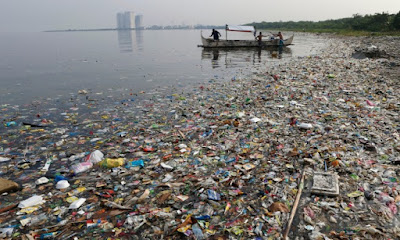Seasoning Your Food
It's hard to recognise the boundaries between seasons these days. Is there such a thing as Summer in the UK now? It's arguably more logical to skip that bit out and see it as Spring and Autumn with a couple of warmish days thrown in between. And I literally mean a couple. In fact, this weekend we had perhaps the first global definition of a 'hot' day in months (rather than a British definition of a hot day, which more often than not still involves at least 2 layers of clothing).
Whether or not we believe four seasons really exist anymore, it seems plants still do. They always seem to know when they should and shouldn't be 'in season'. Sometimes this is easy to forget in a modern world where we have everything available to us at the supermarket year round. But here's why we should be trying to eat with the seasons (and it's not as horrible as you think).
I recently read a fantastic book by Lancaster-based sustainability consultant Mike Berners-Lee called How Bad Are Bananas?. It details, in a very readable and enjoyable format, the carbon footprint of pretty much everything, including bananas (turns out they're not bad at all!). Berners-Lee uses a fairly technical method that calculates an estimation of the carbon footprint of a product including all loose ends (sourcing, transport, equipment, upkeep of said equipment, packaging, power consumption of all involved processes, etc etc), and the results where seasonal food is concerned are eye-opening.
Here are a couple of examples:
- A 250g pack of locally-sourced, seasonal UK asparagus (April to June) has a total footprint of 125g CO2e. Out of season, however, asparagus is air-freighted to the supermarket shelf from countries as far away as Peru, creating a carbon footprint of around 3500g CO2e! If my maths is right, that's a whopping 27 times more damaging to the environment, for exactly the same amount of veg. This increase is mostly due to the fact that asparagus has a short shelf life and therefore needs to be flown rather than shipped (emissions by air are more than 100 times more damaging to the climate than emissions from shipping).
- A punnet of in-season local strawberries (May to September) has a footprint of 150g CO2e, but when grown out-of-season locally - in a heated greenhouse - those same strawberries can have a footprint of around 1800g, 11 times more damaging to the environment. Even though both are local so there are no extra transport costs, it takes a huge amount of energy to grow things in an artificially-heated environment, hence the big difference.
- A banana has an estimated footprint of 80g CO2e (we obviously don't grow them here so this is a ballpark figure for bananas grown abroad). That's pretty good for food that has to travel thousands of miles to get to your fruit bowl. This is because bananas have a long shelf life so they can be shipped rather than flown, which is much more environmentally-friendly. The same is true for apples and oranges.
So, it is soooooo much better for our environment to eat seasonal fruit and veg. But it's not all doom and gloom. We need not banish food grown out of the UK - as long as it's grown naturally and shipped over, rather than air-freighted, the carbon footprint won't be that bad. In fact, if it's out of season in the UK it's actually better to buy it from abroad than from heated greenhouses nearer to home. Berners-Lee makes the following point: "If something has a short shelf life and isn't in season where you live, it will probably have had to go in a hothouse or on a plane."
Of course, the most environmentally-friendly - and simplest - thing you can do is not waste your food, wherever it's from.
For info on what's in season in the UK, have a peek here.
Berners-Lee, Mike. (2010) How Bad Are Bananas?. Profile Books, London.
__________ Laurence
The Contemporary Caveman
__________ Laurence
The Contemporary Caveman

Comments
Post a Comment